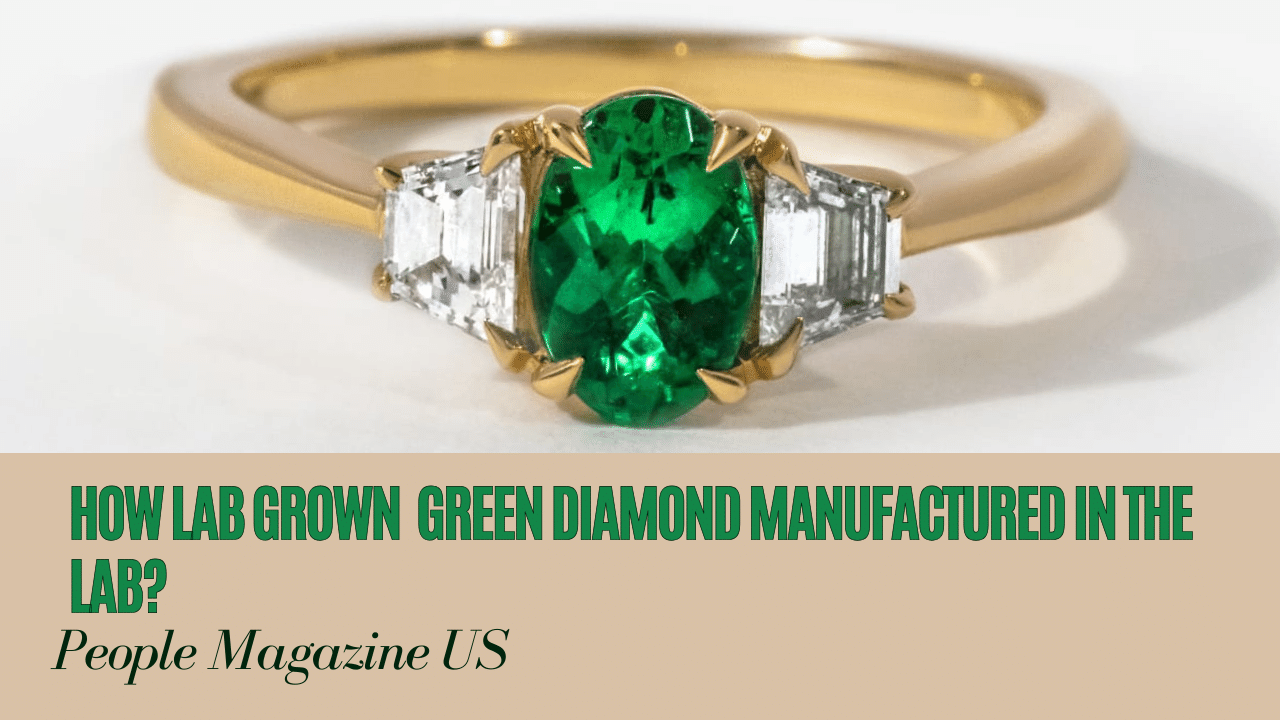When it comes to jewels, diamonds are the most popular choice because of their unmatched brilliance and everlasting appeal. Among these coveted gems, green diamonds hold a special allure, evoking images of verdant landscapes and natural beauty. Traditionally, green diamonds have been exceedingly rare, formed deep within the Earth’s crust over millions of years under intense pressure and heat. However, advancements in science and technology have ushered in a new era, where these exquisite jewels can now be cultivated in laboratories, offering a sustainable and ethically conscious alternative to their mined counterparts.
Understanding Lab-Grown Diamonds
Lab-grown diamonds, also known as man made diamonds, are created through advanced technological processes that replicate the natural conditions under which diamonds form within the Earth. These methods typically fall into two categories: High Pressure-High Temperature (HPHT) and Chemical Vapor Deposition (CVD).
In the HPHT method, a small diamond seed is placed in a chamber where high pressure and temperature conditions akin to those found in the Earth’s mantle are created. Carbon atoms are then deposited onto the seed, gradually building up layers until a diamond crystal of the desired size forms.
On the other hand, CVD involves introducing a carbon-rich gas into a vacuum chamber, where it is ionized into plasma. Under controlled conditions, the carbon atoms precipitate onto a substrate, such as a diamond seed or a piece of natural diamond, forming a diamond layer over time.
The Journey to Green
While traditional lab-grown diamonds are typically colorless or exhibit faint hues, the process of creating Green Diamond Lab Grown involves an additional step to introduce color into the crystal lattice. This can be achieved through the introduction of trace elements or irradiation during the growth process.
Introduction of Color:
- Trace Elements: Incorporating specific trace elements, such as nitrogen or boron, during the growth process can impart color to the diamond. In the case of green diamonds, the presence of naturally occurring radiation may also contribute to their coloration.
- Irradiation: In some cases, lab-grown diamonds are subjected to controlled irradiation to induce color changes. This process involves exposing the diamond to high-energy particles or electromagnetic radiation, altering the arrangement of atoms within the crystal lattice and resulting in the desired coloration.
Advantages of Lab-Grown Green Diamonds
- Ethical and Sustainable: Lab-grown diamonds offer a more ethical and environmentally friendly alternative to mined diamonds. By eliminating the need for mining, these gems avoid the associated environmental impact and social issues often associated with traditional diamond extraction.
- Consistency and Quality Control: The controlled conditions of the laboratory environment allow for precise control over the diamond-growing process, resulting in gems with uniform quality and characteristics. This consistency is particularly desirable for jewelry manufacturers and consumers seeking assurance of quality.
- Cost-Effectiveness: While natural green diamonds command premium prices due to their rarity, lab-grown counterparts offer a more affordable option without compromising on beauty or quality. This accessibility makes green diamonds more accessible to a wider audience of enthusiasts and collectors.
Conclusion
The emergence of lab-grown green diamonds represents a remarkable fusion of science, technology, and artistry, offering a sustainable and ethically conscious alternative to their natural counterparts. Through innovative processes and meticulous craftsmanship, these exquisite gems captivate the imagination with their mesmerizing beauty, while also paving the way towards a more sustainable future for the jewelry industry. As technology continues to advance, the possibilities for creating stunning lab-grown diamonds in a spectrum of colors are boundless, promising a dazzling future for gemstone enthusiasts worldwide.



